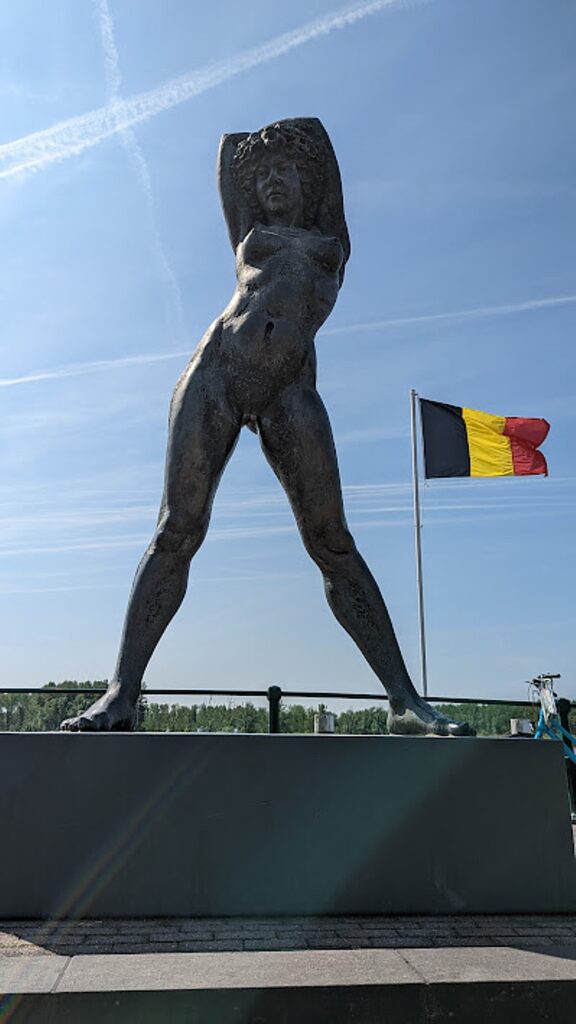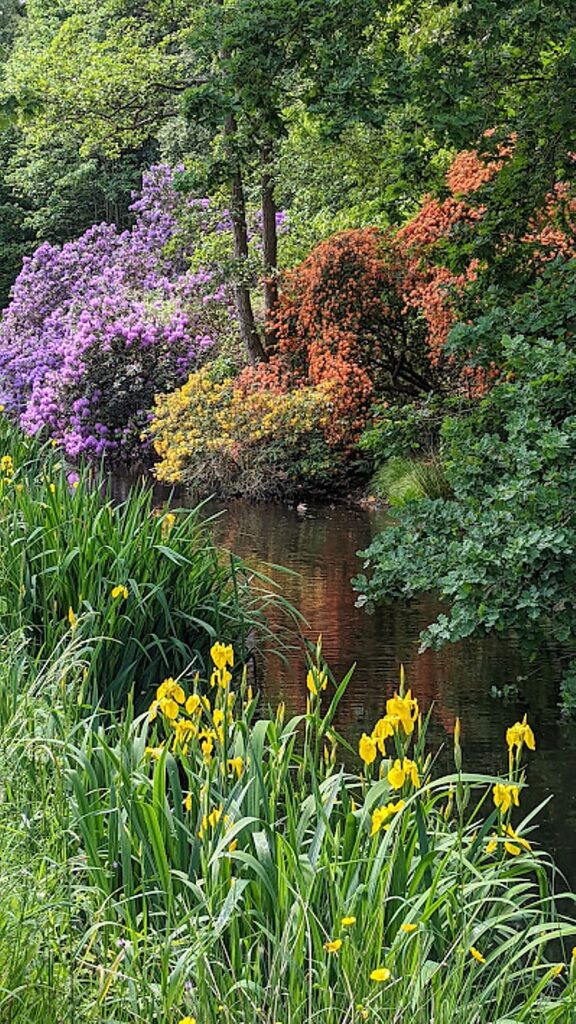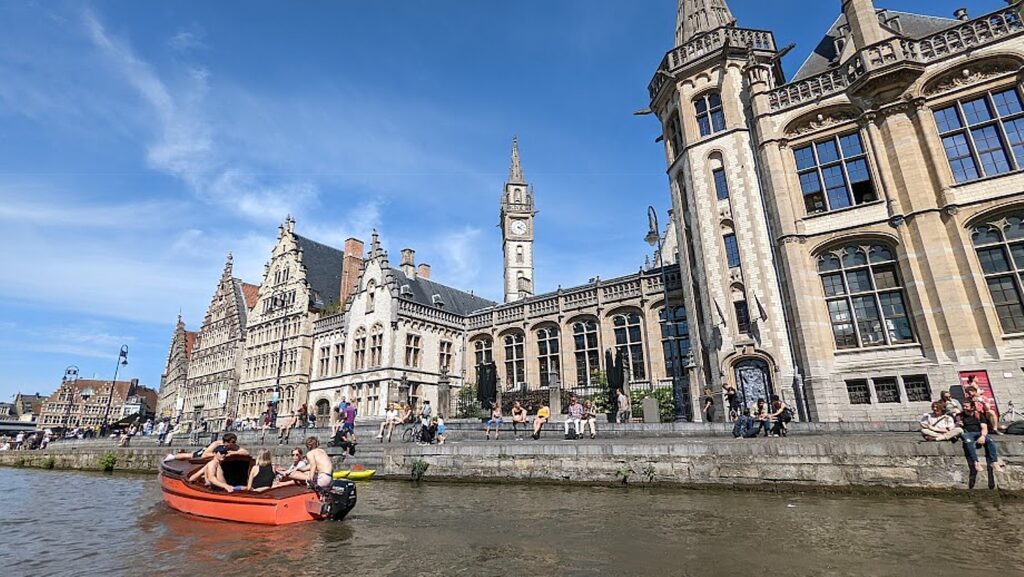
By Karen Rubin, Travel Features Syndicate, goingplacesfarandnear.com
Though technically our Day 2 of BoatBikeTours’ eight-day Bruges-Amsterdam bike tour, our first ride takes us 35 miles from Bruges to Ghent along waterways, through farmland and villages and we get oriented to how they organize the ride, the gorgeous bikeways, local culture, and stunning scenery.

We stop at a very interesting Canadian War memorial – it’s actually the mangled tank turned into sculpture – and our leader, Arnold Thurkow (who spent a career in the military) tells us the story of these World War II defenders.
We stop next at Castle Lovendegem where our leader, Corrie Stein, tells the story of this place: it is privately owned by a Paris-based prominent wine merchant who grew up here and uses the castle for wine tastings (funny how contemporary history sounds more like gossip). We have a coffee break in the town of Aalter where I get to wander around and look into a bakery and a church.
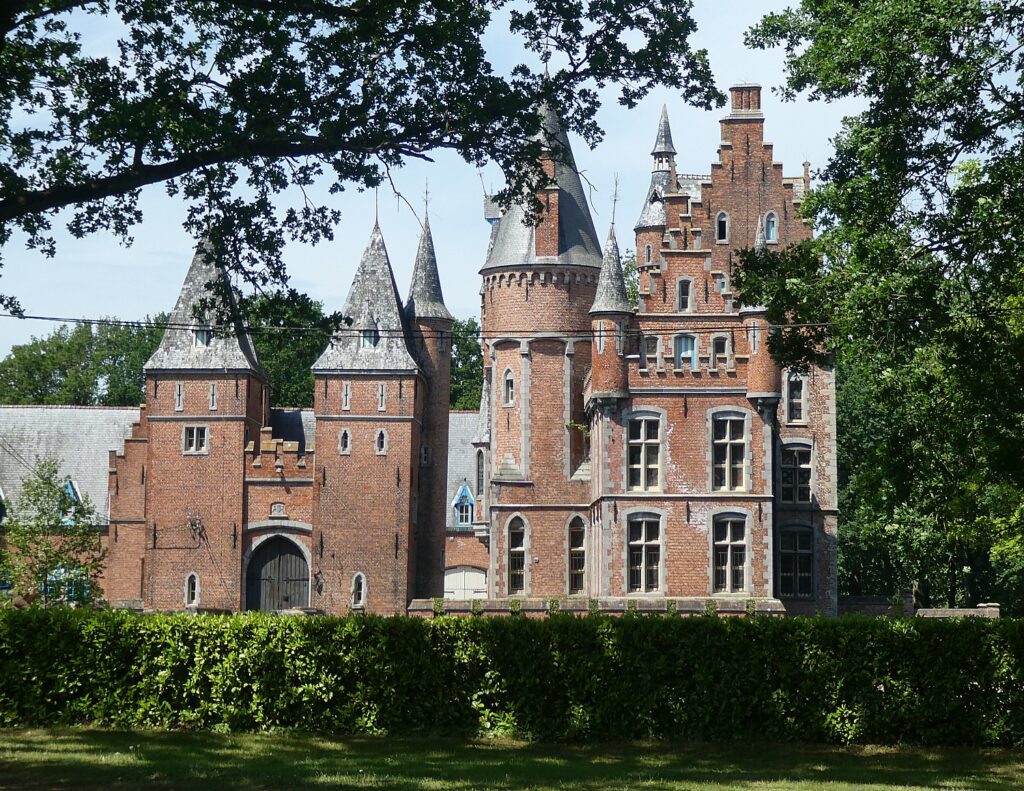
One of the most unusual sights along the trail that winds beside farms comes when Corrie stops at vending machines where you can purchase a basket of the freshest, sweetest strawberries you have ever savored (Corrie says there are even vending machines to buy fresh chicken!).

As we set out, we quickly see just how popular cycling is in Belgium – one biking club after another and families on an outing, come as a steady stream on these magnificent bike paths, trails and dedicated roadways.

Our group on this first day of riding has been a bit slow (not my fault, I swear) so we have divided into two. I join the slower group so I don’t feel self-conscious shooting photos as I ride. As a result, we reach Ghent about 40 minutes after the first group, just in time to rush to meet up with the rest of our group for the pre-arranged sightseeing canal boat tour of the city (but the other group had 40 minutes to explore – we won’t make that mistake again).

During the sightseeing canal boat trip, the guide points out a grain depot from the 1200s; a toll booth; a tiny tax house; a 16th century guild house; one of the historic city gates; a fish market that operated from the 15th century to the 1950s when it became a car wash but now is the visitor center. He points out a statue of a boy peeing – it’s a famous image – but he said it actually represents the leather tanners union because they used the urine of boys to smooth the leather (it was tasted to determine if the urine was of good quality), so there are many of these pissing statues.
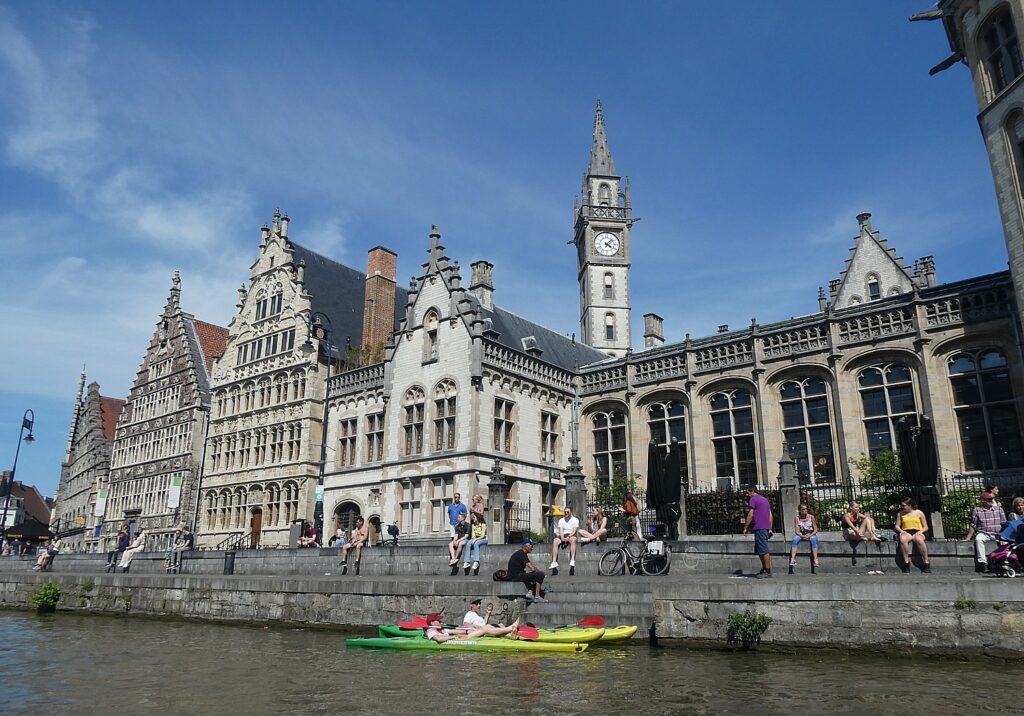
Ghent was one of first industrialized cities that made textile barons wealthy. But the men, women and children who worked in factories lived in pollution, overcrowding and squalor – they worked in 16 hour shifts for low wages. This, along with the university, helps explain why Flemish Socialism was born in Ghent (still a liberal/progressive city, with Socialists still in the majority).

He points to a cannon dating from the 15th century that was installed here in the 16th century for defense. “It was only used once – two people died operating it. Today it is a peace symbol.”
Ghent, I learn, was the birthplace of Charles V who became the Holy Roman Emperor. At the time, Ghent was the 3rd largest city in Europe. To honor their favorite son for his 500th birthday, the city built the Bridge of Imperial Delight decorated with his bust. (Nearby is a sign, “Boat Tourism. Noise Pollution.)
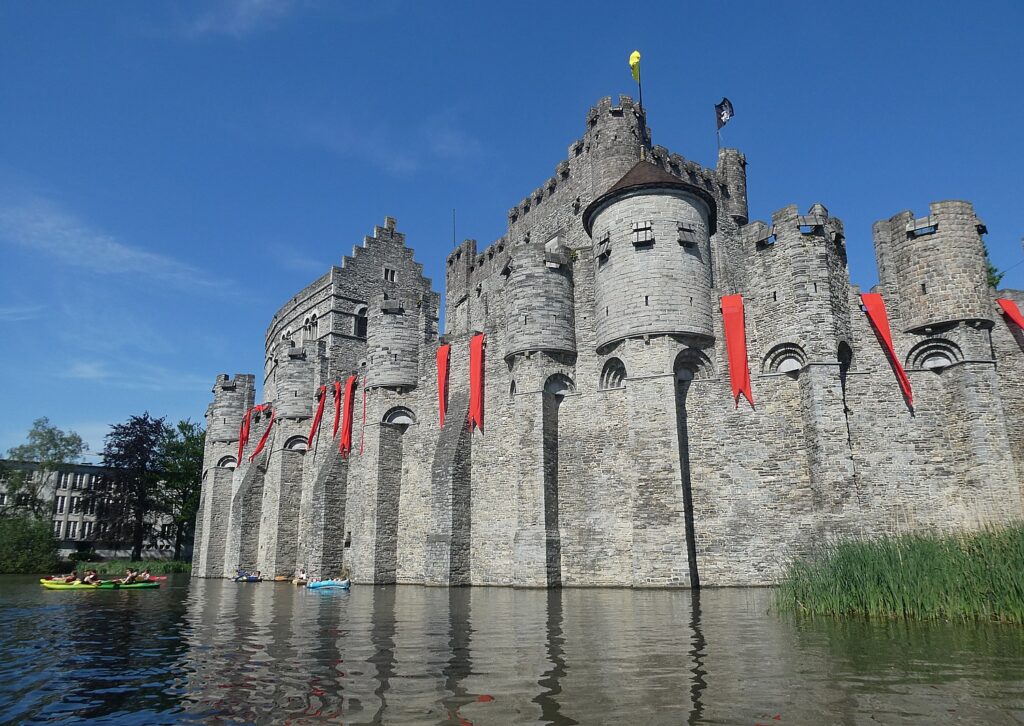
We see a formidable castle, called the Hall of Justice, which (interestingly? ironically?) became a torture chamber. In 1949, students occupied the Castle to protest rising beer prices. “They didn’t change anything, but every November, they celebrate.”
After the canalboat tour (really excellent and appreciated), we still have another few miles to ride to get to St. Michael where our ship, the Princesse Royal is docked.
This day’s ride turns out to be the longest and also the hottest of our trip and when we return to the ship we are greeted with fruit-infused ice water and snacks.
We relax onboard the Princesse Royal and enjoy our dinner: a delectable pumpkin soup with basil; beef stew prepared like chili; a superb mango sorbet for dessert.
An Artist’s Gallery
Day 3’s ride, from Ghent to Merelbeke is 32 miles (or 24 for those wanting a shorter route) to Dendermonde-St. Amands.
We start cycling along the canal and stop at Castle Van Laarne, and visit the small village for our coffee break.(The sign reads: Kasteel Van Laarne-Dit Domein is Prive Eigendom”)
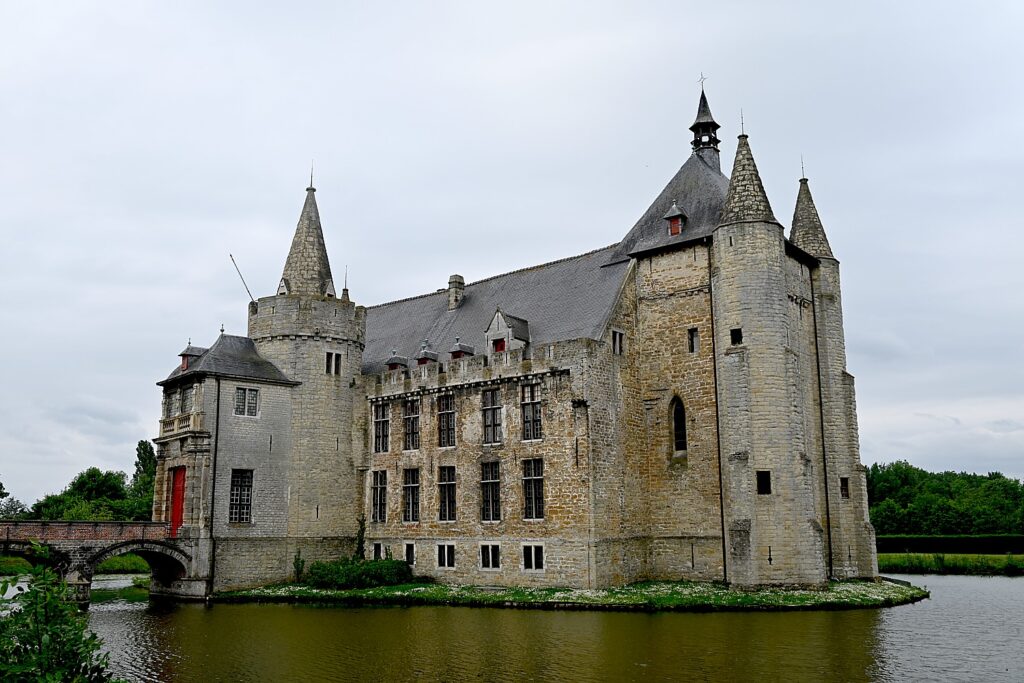
We ride on to Lake Donk, Belgium’s second biggest lake and a popular recreational center where we have the relaxing lunch we packed from the ship.
Continuing on we take a free ferry across a small river, and bike along the river.
We ride into the city of Dendermonde. Corrie points out a statue of Queen Astrid, who is like Belgium’s Princess Di. She died in the 1920s in a car accident when her husband was driving. “He was so distraught, he couldn’t bear to look at his kids and they were sent to live with someone else.” Many squares in the country have statutes to her. Across the way is the International Court of Justice, where apparently “smaller” conflicts than are handled at The Hague (mostly about money) are heard.
Corrie tells us about this town’s most unique and important festival, held every 10 years (the 2020 festival was delayed until May 28, 2022 because of COVID; 85,000 watched). There are banners all over the city featuring the Horse Bayard with four boys on its back.
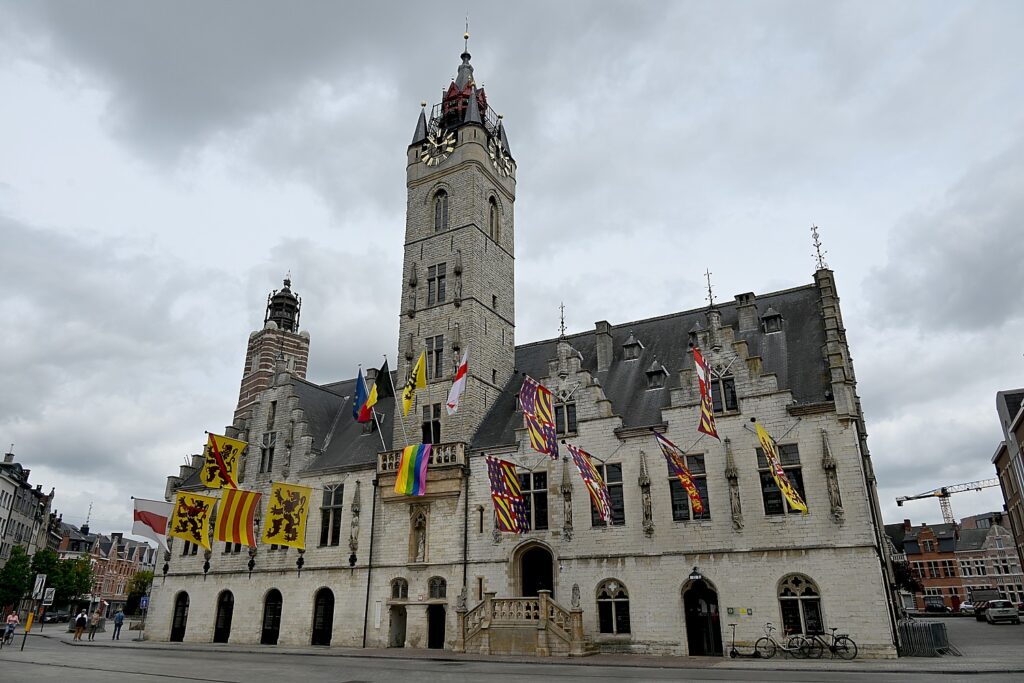
The legend (which I really can’t understand why this would be celebrated), goes like this: Aymon, Lord of Dendermonde who was related to Charles the Great (Charlemagne), had four boys who were on track to become knights. One boy was very strong (and apparently aggressive) and had to have strong horse. Bayard, to match. The boy played chess with Charlemagne’s son and in a fit, killed Charles’ son. Charles took their father captive, told the boy that to get his father back, he would have to give up his horse, Bayard. Reluctantly, the boy gave up the horse, which Charlemagne had drowned.
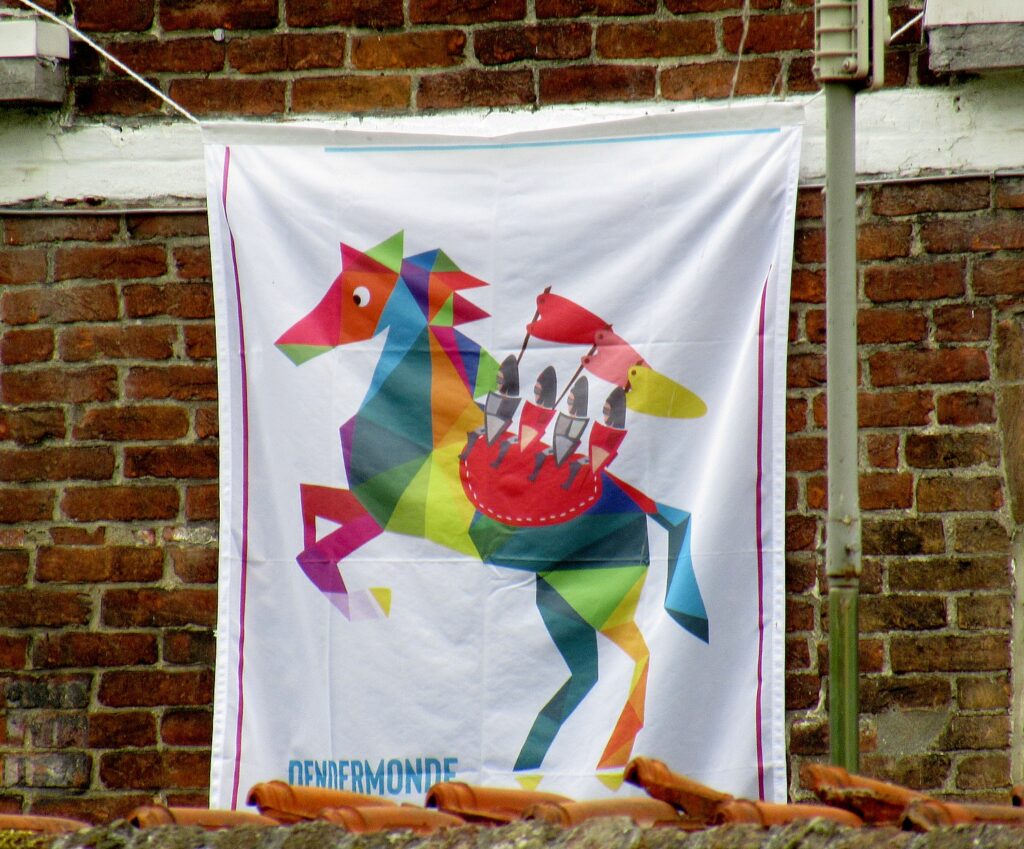
So, every 10 years, the small town commemorates this event with a huge horse, 4 meters high, who carries 4 boys on its back. The boys who are chosen have to have grandparents and parents from here, be four boys born in a row (no sisters) and be between ages of 16-25.
Dendermonde also holds a Traditional Giants Parade, Katuit, each year on the last Thursday of August when three giants – lndiaan, Mars and Goliath – parade through the town, accompanied by 1000 actors in medieval attire, floats, bands, flag-tossers, professional street performers and torchbearers.
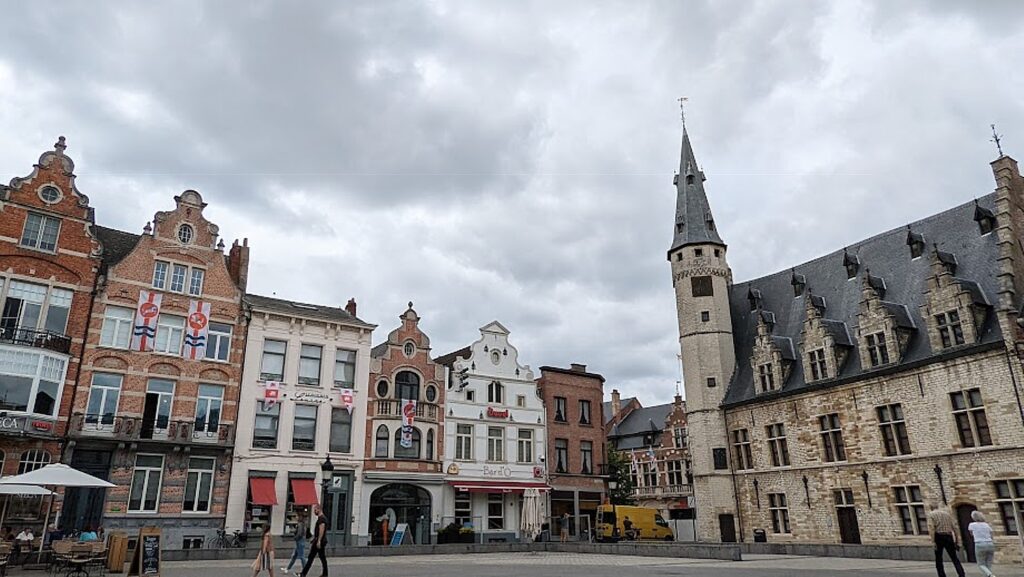
We bike to St. Amands where the ship is docked (actually next to another BoatBikeTours’ ship, the Magnifique IV) and can walk into this quiet village before dinner.
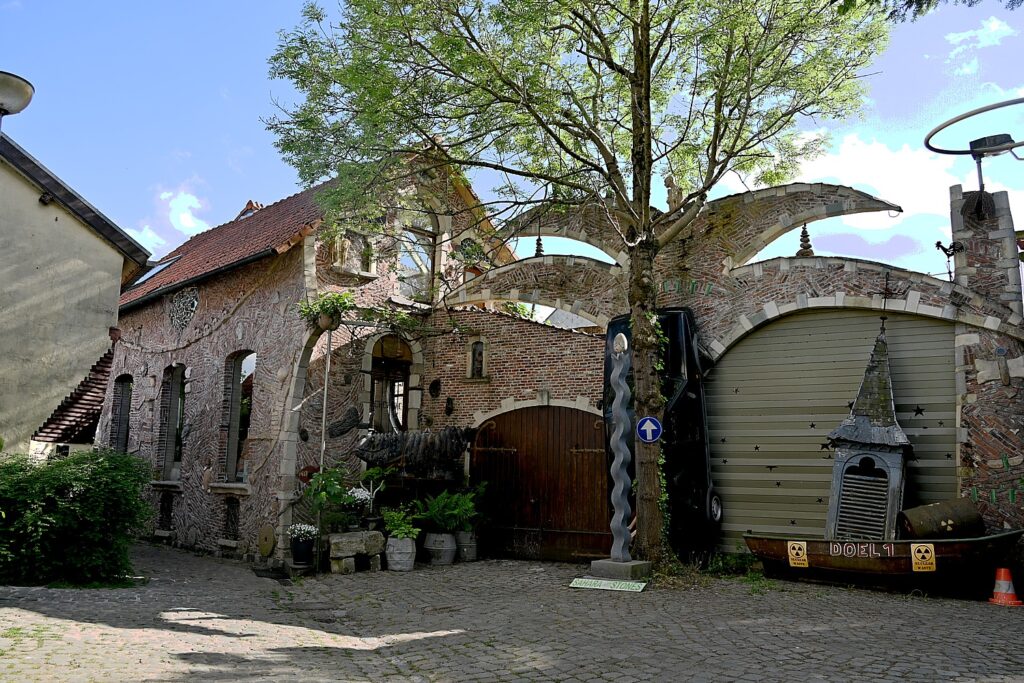
After dinner (beef carpaccio with truffles, pasta with salmon and lobster sauce), Corrie and Arnold lead us on an excursion to visit Sahara Stones, a gallery and home of artist Joris Maes and his wife, who gives us a tour and explains his extraordinary art.
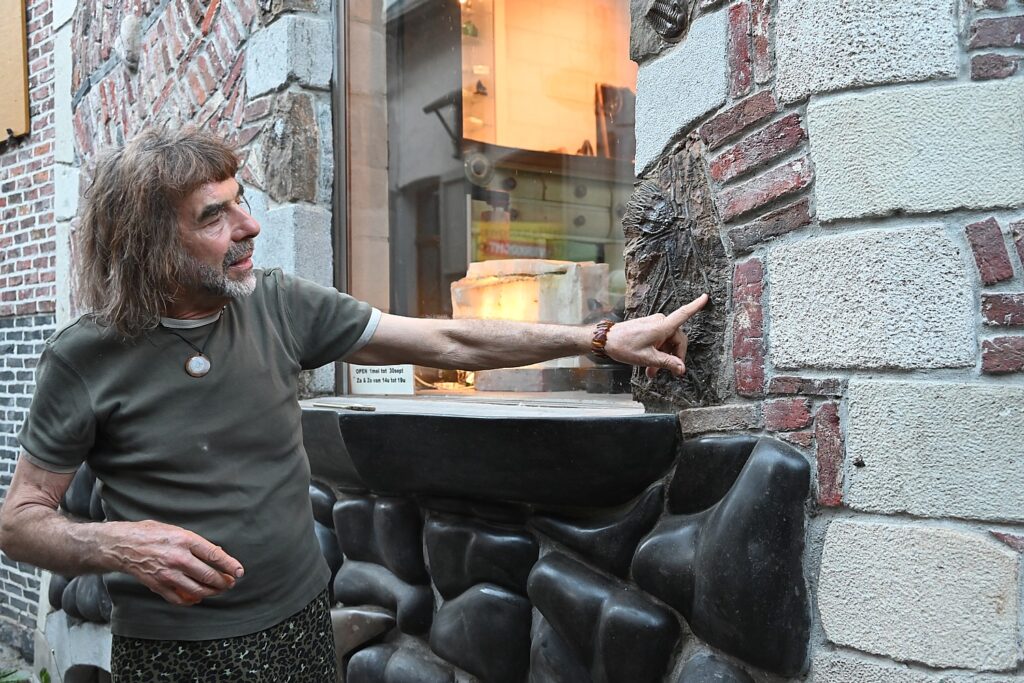
Joris built his house and everything in it, and spends his winter in the Sahara, driving down in a van, to collect fossils and stones which he sculpts for his art. The fossils are embedded along with stones in the walls of his house. “The house is the history of my life,” he tells us.
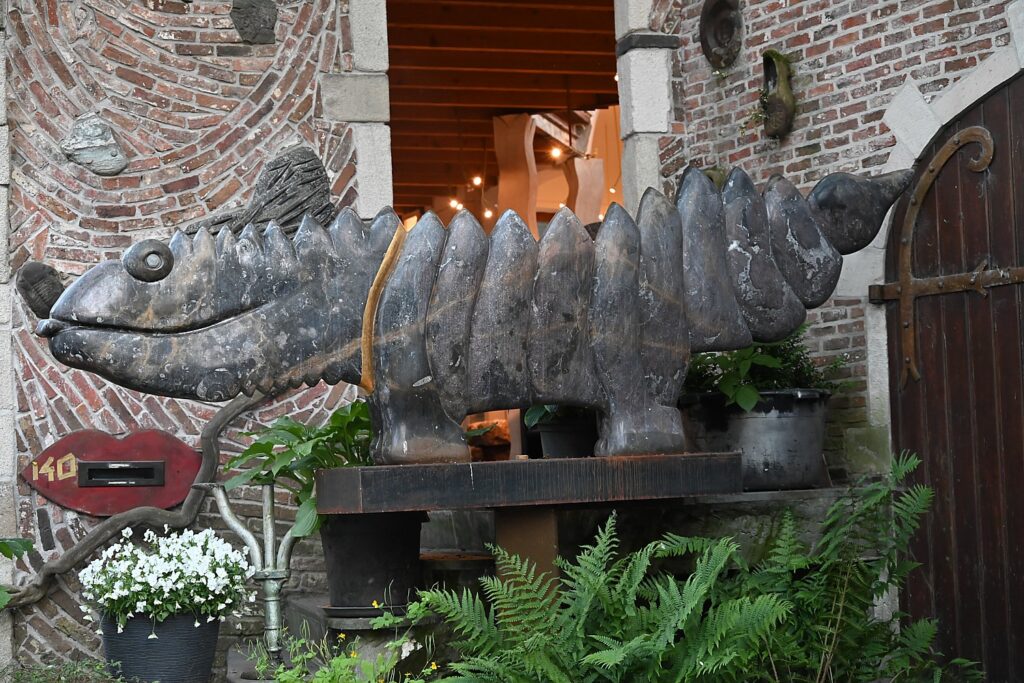
The fossils, some of them absolutely enormous, encapsulate the history of earth, and Joris has turned them into rather marvelous sculptures – birds, animals. You think how the heck has he been able to acquire these pieces that you would think would be the nation’s heritage or in a museum. They are 360 million year old fossils, “before the continents formed,” he tells us. (sahara-art-stones.com)

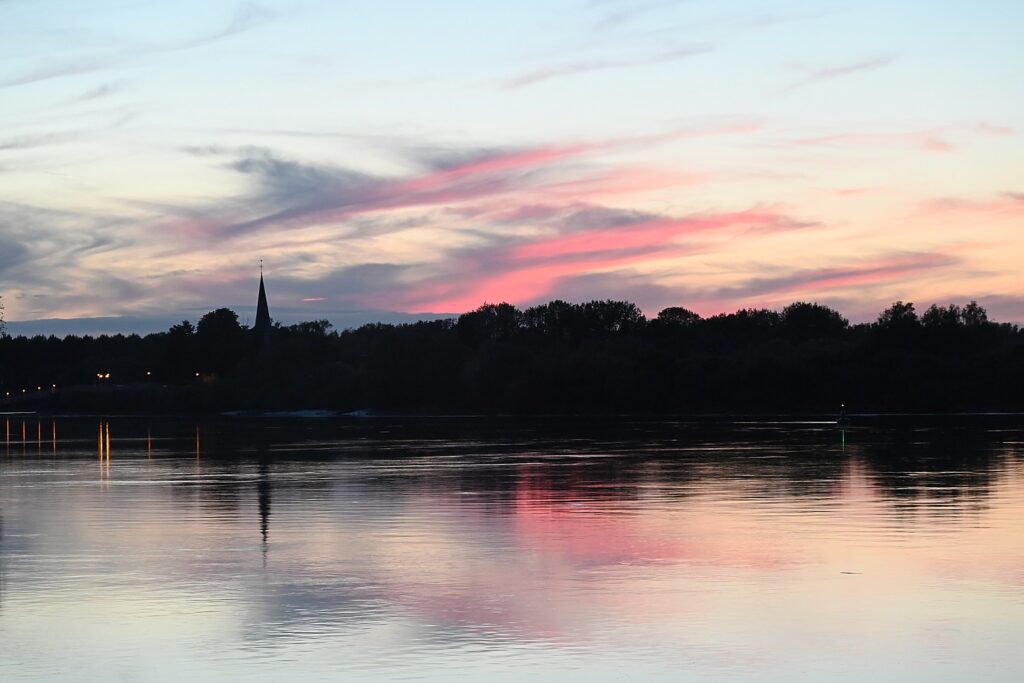
Kasteel Wissekerke
On Day 4, we set out from St. Amands for a 30 mile ride to Antwerp (the shorter option is 21 miles).
We stop briefly to see a16th century castle which, Corrie tells us, was once owned by a cousin of William of Orange who led the Dutch revolt against Spanish King Philip II. The revolt – largely over religion (they call it religious freedom) began in 1568 and was finally won 80 years later. The castle is privately owned today.
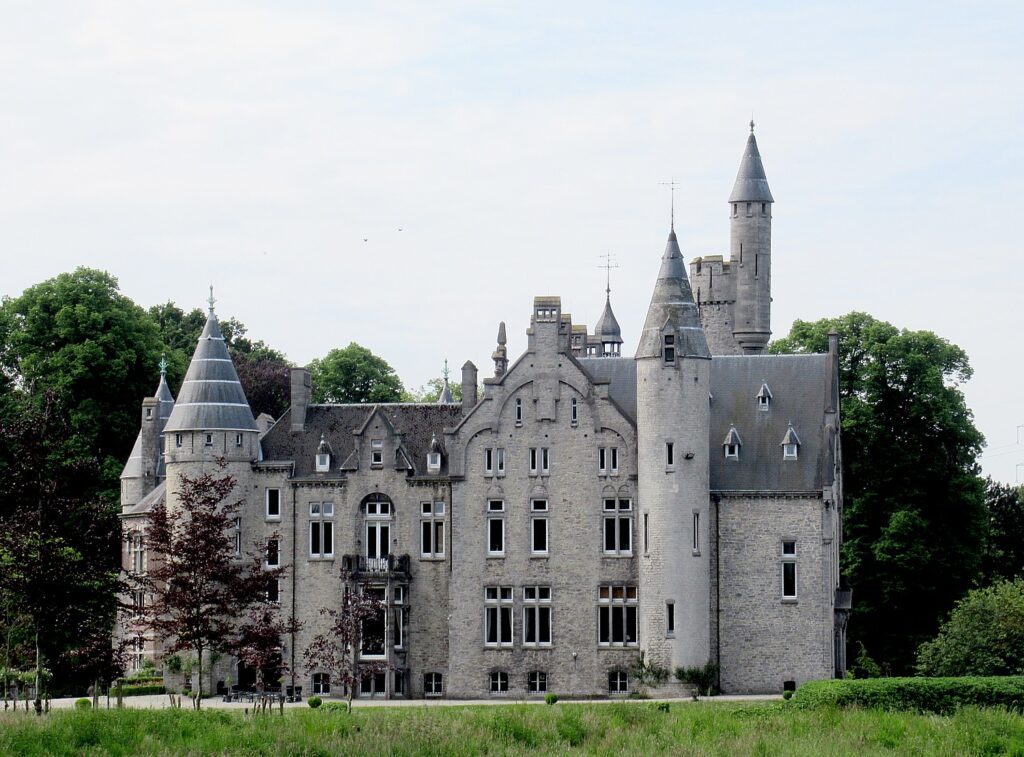
The cycle path follows the river. At Kruibeke, Corrie introduces us to what she calls their “statue of liberty” – a modern, sensuous statue of a woman, “curvey like the bends of the river.”
The town is significant because Gerardus Mercator, the 16th-century geographer, cosmographer and cartographer, most famous for creating a revolutionary 1569 world map, was born here (by accident – his parents were visiting relatives).
Mercator’s map represented sailing courses as a path of constant bearing, measured relative to true north (Rhumb lines)—an innovation that is still employed in nautical charts. In their day, they were as revolutionary as GPS, and improved navigation at a time when global shipping was the key industry contributing to a nation’s wealth.
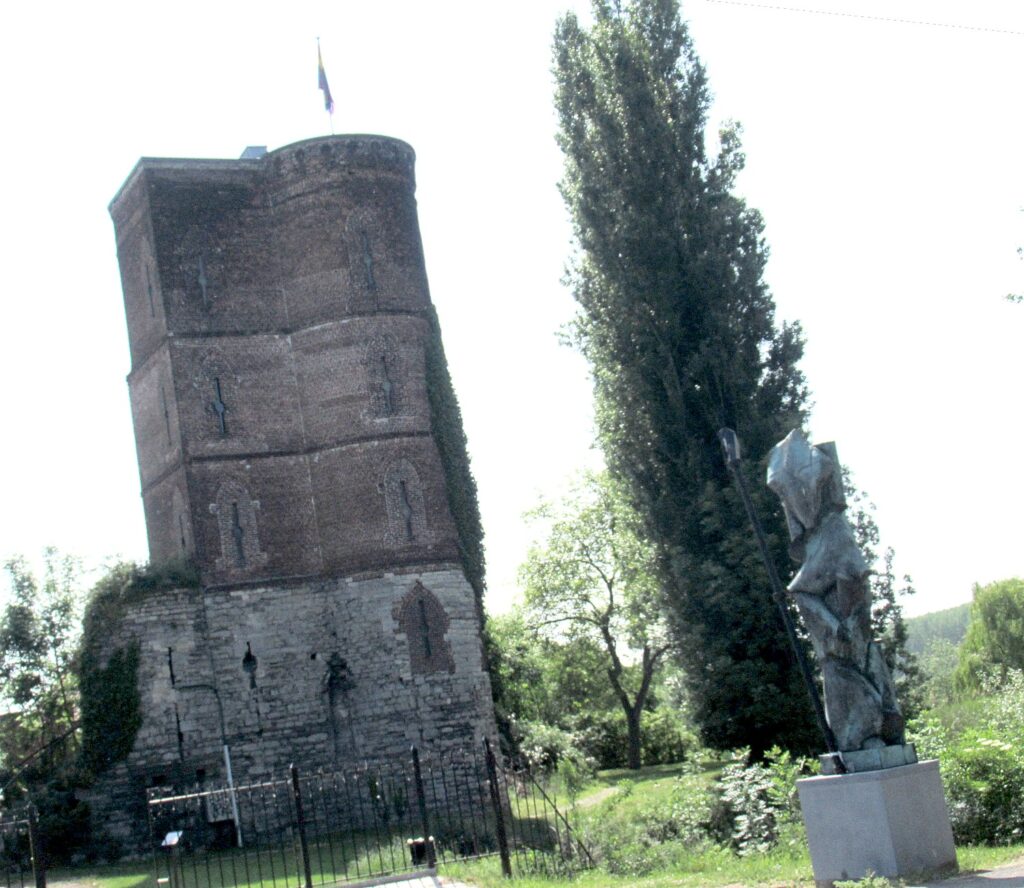
He wound up being imprisoned here in 1543 by the Catholic Church “for radical thinking. “When he couldn’t work, he became poor.” We ride passed Graventoren (Earl’s Tower) where he was imprisoned. There is also the remnants of a castle in Rupelmonde in the town of Kruibeke, where there is a statue of Mercator and a museum.
A bit further on, we stop to eat our picnic lunch at a restaurant that is also a farm museum, the VZW Museum De Schuur, with interesting antique implements that belonged to the proprietor’s husband (we see black and white photos of him). (www.museumdeschuur.be)
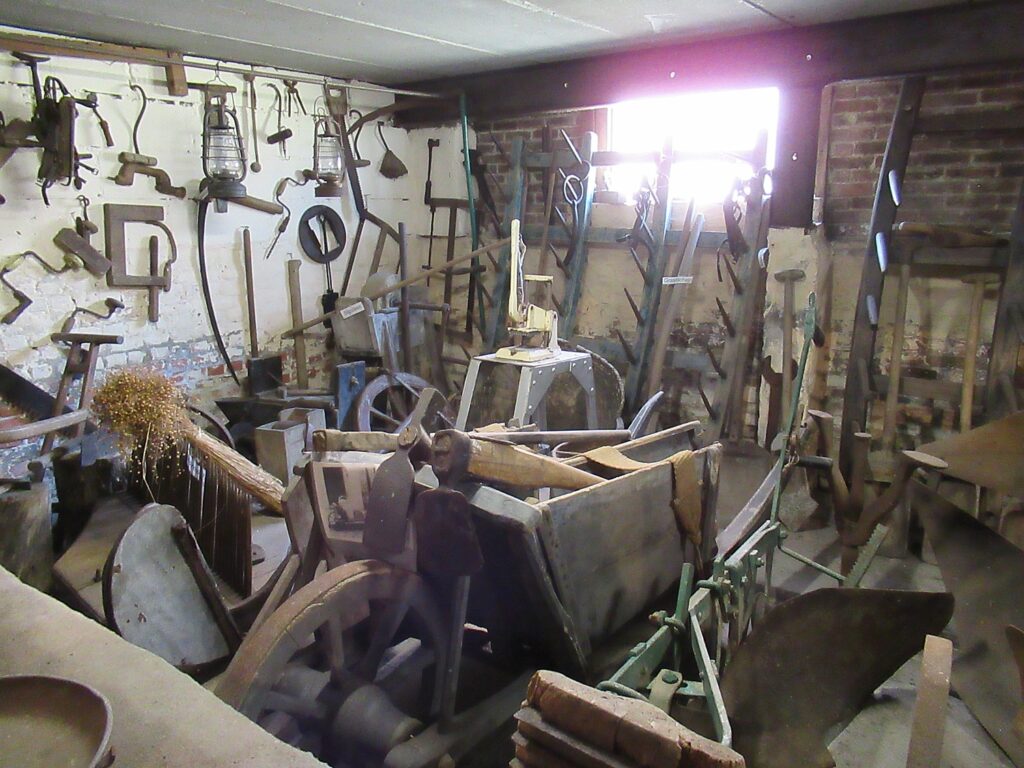
It is just down the road from a stunning (privately owned) castle (Kasteel Wissekerke) and garden which presents a gorgeous scene.
There has been a castle here since the 10th century, but the present one was largely built in the 15th century with lake, park and a suspension bridge. In fact, it is the suspension bridge, rather than the castle, that is of major importance: the bridge is one of the oldest surviving wrought iron suspension bridges in Europe, designed in 1824 by Jean-Baptiste Vifquain, an engineer from Brussels. “Though it only spans 23 meters, the bridge is of great industrial archaeological importance because of its historical and structural uniqueness,” notes read. The bridge, castle, gatehouse and pigeon tower were designated a protected historical monument in 1981.
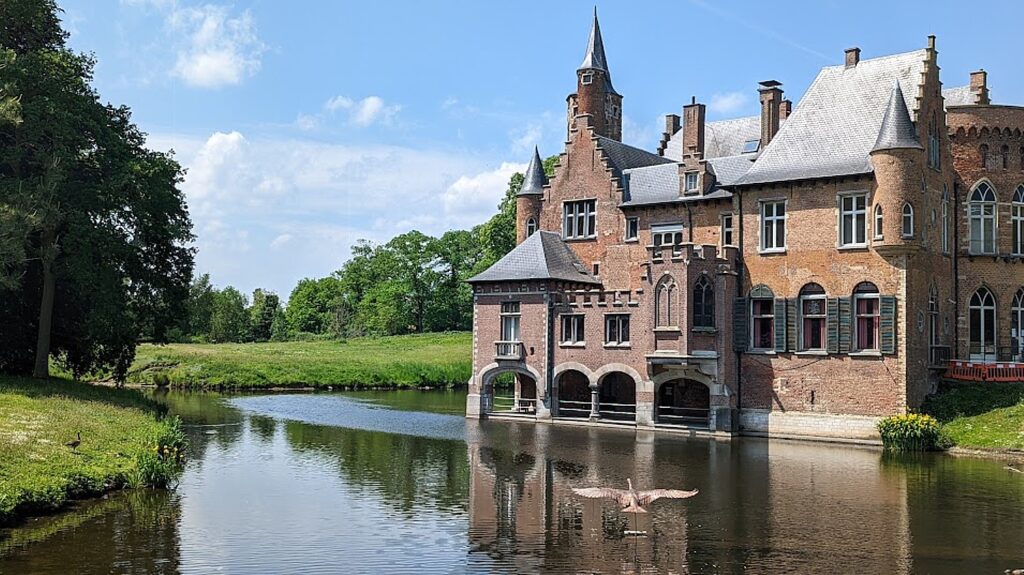
Among the important people who lived at Wissekerke, was the influential family of Vilain XIIII –who were mayors of the town of Bazel for 139 years. In 1989, the castle was purchased by the town of Kruibeke, which has since handled the restoration work. The castle is also venue to many cultural activities, tours and exhibitions.
It is an idyllic scene.
We bike on to Antwerp.

Boat Bike Tours, Aambeeldstraat 20, 1021 KB, Amsterdam, Netherlands, tel.: +31 20 72 35 400, [email protected], www.boatbiketours.com.
See also:
Idyllic Trip: Biking and Boating from Bruges to Amsterdam
Bruges-Amsterdam by BoatBikeTours: Biking to Ghent
Bruges to Amsterdam by BoatBikeTours: Antwerp, Medieval Jewel
Bruges to Amsterdam by BoatBikeTours: Dordrecht, the Birthplace of Holland
Bruges to Amsterdam by BoatBikeTours: The Windmills of Kinderdijk
__________________
© 2022 Travel Features Syndicate, a division of Workstyles, Inc. All rights reserved. Visit goingplacesfarandnear.com, www.huffingtonpost.com/author/karen-rubin, and travelwritersmagazine.com/TravelFeaturesSyndicate/. Blogging at goingplacesnearandfar.wordpress.com and moralcompasstravel.info. Visit instagram.com/going_places_far_and_near and instagram.com/bigbackpacktraveler/ Send comments or questions to [email protected]. Tweet @TravelFeatures. ‘Like’ us at facebook.com/NewsPhotoFeatures

